Starting your mountain biking journey is exciting and a bit scary for newbies. By being well-prepared, you can have a safe biking experience. This guide offers crucial tips for beginners, covering essential gear, bike setup, and how to develop skills. It’s all about having fun and staying safe.
Getting advice from seasoned bikers and groups like Liv Cycling UK is valuable. They stress the importance of proper gear and starting on easy trails to gain confidence. Remember, every expert was once a beginner. Your adventure is just starting with many chances to learn and explore. These tips will help you start off on the right foot!
Start with the Right Gear
Picking the right mountain biking gear is key when starting. The correct gear not only makes your ride better but also keeps you safe on trails. There are many bikes to choose from. You should find one that suits how you ride and your ability. Beginners should look for stable and reliable bikes to help build confidence and skill.
Invest in a Quality Mountain Bike
A good mountain bike is vital for a great riding experience. Prices for beginner mountain bikes are usually between £500 and £1,000. This price range provides a mix of value and performance. You can pick from rigid, full-suspension, and hardtail bikes, each suited to different terrains. The Marin Rift Zone 27.5 is a top choice for new riders at £1,760. For high-end features, consider the Juliana Maverick or the Pivot Switchblade, costing £5,299 and £6,199.
Importance of a Properly Fitted Helmet
Getting the right helmet fit is crucial for safety in mountain biking. A helmet that fits properly can stop major injuries. Bell, POC, and Fox make helmets designed for the best protection. The Fox Flux helmet costs £104.97 and even comes with a camera mount. Make sure your helmet fits right to avoid injuries. This is a key part of your biking equipment.
Essential Accessories for Protection
Besides a bike and helmet, protective accessories are important. Gloves, especially full-fingered padded ones, protect your hands. It’s better to use a hydration pack than a typical water bottle because it stores more and keeps you hydrated. You also need a hand pump, spare tire, patch kit, multi-tool, first-aid kit, and rain jacket. Wearing the right clothes, like cycling jerseys and padded shorts, improves trail comfort and performance.
| Accessory | Description | Price Range |
|---|---|---|
| Helmet | Essential for head protection in case of falls | £104.97 – £190 |
| Gloves | Provide grip and protection for hands | £20 – £50 |
| Hydration Pack | Conveniently carries water and extra gear | £30 – £100 |
| Multi-Tool | Versatile tool for on-the-trail repairs | £15 – £60 |
Master Your Bike Setup
Getting the right bike setup is crucial for a better riding experience. Many riders don’t realise how much bike comfort and ergonomics matter. They massively affect how well you perform and enjoy biking. Beginners should choose a setup that makes them feel comfortable and safe.
Get Your Bike Dialed for Comfort
Beginners often regret buying high-end mountain bikes they see in magazines. These bikes can feel tricky to control if they’re beyond your skill level. A comfy saddle and the right bike position are key to comfort. Gretchen Reeves, a pro mountain bike racer, also points out the importance of suspension setup. It helps your bike absorb bumps and stay under control. Plus, a good chamois pad makes rides more comfy.
Professional Bike Fit Recommendations
A proper bike fit can boost your performance and lower injury risks. Jason Moeschler, a pro racer, suggests beginners try loaner bikes first. This helps them figure out if they’re really into biking before spending money. Make sure a mechanic tunes the loaner bike well. A good fit also means a snug helmet that stays put, which is vital for safe riding on tough terrains.
| Bike Setup Components | Importance |
|---|---|
| Saddle Height | Affects pedalling efficiency and comfort |
| Handlebar Adjustments | Ensures proper reach and posture |
| Suspension Settings | Improves impact absorption and overall control |
| Brake Position | Enhances control and prevents skidding |
Following these pointers will make biking more enjoyable. Focusing on bike fit and comfort can lead to more riding. This will boost your confidence and skills on the trails.
Beginner Mountain Biking Tips for Trail Selection
Choosing the right trails is vital for new mountain bikers. It leads to a safer and more fun experience. It also helps in building confidence and improving biking skills.
Choosing the Right Trails to Start With
Beginner trails are great for starters. They usually have smooth surfaces, wide paths, and gentle slopes. Places like London’s Swinley Forest or Birmingham’s Cannock Chase have many suitable green routes. Here are some other good spots for beginners:
| Location | Trail Type | Details |
|---|---|---|
| Swinley Forest | Green | 24 km of purpose-built riding |
| Cannock Chase | Green & Blue | Ideal for beginner mountain bikers |
| Forest of Dean | Blue | Trails for all levels, including beginners |
| Kielder Forest | All abilities | Over 100 km of riding possibilities |
| Afan Forest Park | Green & Blue | Rookie routes with optional progression |
The Importance of Riding Smooth Trails
Riding smooth trails is key for beginners. It makes the ride more comfortable and helps improve bike handling. Beginners should learn to stay relaxed, especially the arms, shoulders, and knees. Keeping a loose grip helps with moving over bumps.
As beginners learn more about choosing trails, they’ll face varied challenges. This slow introduction builds up the skills needed for harder rides. Sticking to familiar routes at first will boost confidence and ease them into mountain biking fun.
Learn from Experienced Riders
Connecting with experienced riders helps you grow in mountain biking. Beginners learn a lot from the knowledge and skills of seasoned bikers. This creates a supportive environment for learning and getting better.
Finding a Supportive Riding Group
To really learn, it’s key to join riding groups. These groups offer friendships and a chance to share experiences and techniques. Riding with others gives you advice and lets you see different styles and skills. Look for local clubs or online communities to meet other bikers. This enhances your skills with their support and friendship.
Seeking Out Mentorship and Advice
Mentorship in biking is crucial for improving your skills. Experienced riders provide advice from their experiences. They help you master essential skills like balance and reading trails. These skills keep you safe. Look for chances to get mentorship, through clinics or informally. This helps you tackle technical climbs and perfect your cornering. This means fewer crashes and a better biking experience.
| Skill Area | Mentorship Tips |
|---|---|
| Core Skills | Focus on balance and pedal stroke for safer riding. |
| Climbing | Learn techniques from experienced climbers to improve your ascent. |
| Cornering | Practice turning methods to enhance speed and reduce crashes. |
| Descending | Gain insights on descending steep terrain to enhance safety. |
| Advanced Techniques | Seek guidance on bunny hops and jumps for skill progression. |
Being part of the biking community through groups and mentorship speeds up learning. The right help and support make becoming a skilled biker easier and more fun.
Focus on Developing Your Skills
If you’re starting out in mountain biking, improving your skills is key. Learning different methods opens up exciting riding experiences. Taking lessons can help a lot. They let you build strong skills and grasp important riding aspects.
Taking Lessons for Better Technique
Lessons give you access to expert advice and structured practice. They help you work on important skills for safe and smooth riding. Beginners should focus on eight key mountain bike skills:
- Braking techniques for varied surfaces
- Proper cornering on different turns
- Understanding gear relationships with terrain
- Strategies for effective gear shifting
- Climbing methods and gear changes for uphill
- Keeping balance and posture while going downhill
- Getting past obstacles like rocks and roots
- Familiarising with trail manners and safety rules
Importance of Practising Trail Navigation
Learning to navigate trails is crucial for confidence and safety. Beginners should try riding in various conditions to get better. Key practices include:
- Using front and rear brakes together for stopping safely
- Starting with easy slopes before moving to harder trails
- Learning how to distribute weight on steep climbs
- Jumping over small obstacles with a bunny hop technique
- Keeping an eye on the trail when approaching hurdles
Regular practice makes you handle different situations better. By staying committed, you’ll improve your skills and enjoy biking more. Always wear a helmet, carry necessary tools, and follow the rules to keep everyone safe.
Conclusion
Mountain biking is thrilling and can be very rewarding with the right mindset and prep. Getting the right gear, setting up your bike well, and choosing the correct trails are key for beginners. It’s also great to have friends who bike. They can offer support and share their knowledge.
Starting your mountain biking journey, it’s vital to improve slowly and enjoy every moment. The tips for beginners in this article will help tackle different terrains. They also explain how to enjoy the unique challenges and fun parts of each. Remembering to ride safely and follow trail rules will make your biking experience better and last longer.
But at its heart, mountain biking is about exploring the beauty of nature and loving the ride. So get your gear, drink plenty of water, and start your adventure in this exciting sport.
FAQ
What are the essential gear items for beginner mountain biking?
Beginner mountain bikers need a few key items. A quality mountain bike and a properly fitted helmet are vital. Also, don’t forget protective gear like gloves, knee pads, and elbow pads. They keep you safe while riding.
How can I ensure my mountain bike is set up correctly?
For a comfortable ride, adjust your saddle height and handlebar position. It’s also a good idea to get a professional bike fit. This ensures your bike is set up perfectly for you, enhancing your biking experience.
What should I look for when selecting beginner mountain biking trails?
Start with trails marked for beginners and choose smooth paths. They help you gain confidence and ensure a safe riding experience.
How can I connect with other mountain bikers for support?
Join local riding groups or check out community events. This way, you can meet other bikers. They can offer mentorship and valuable riding tips.
What skills should I focus on developing as a beginner mountain biker?
Focus on learning to navigate trails. You might also want to take lessons to brush up your riding technique. With regular practice, you’ll get better and feel more confident on your bike.
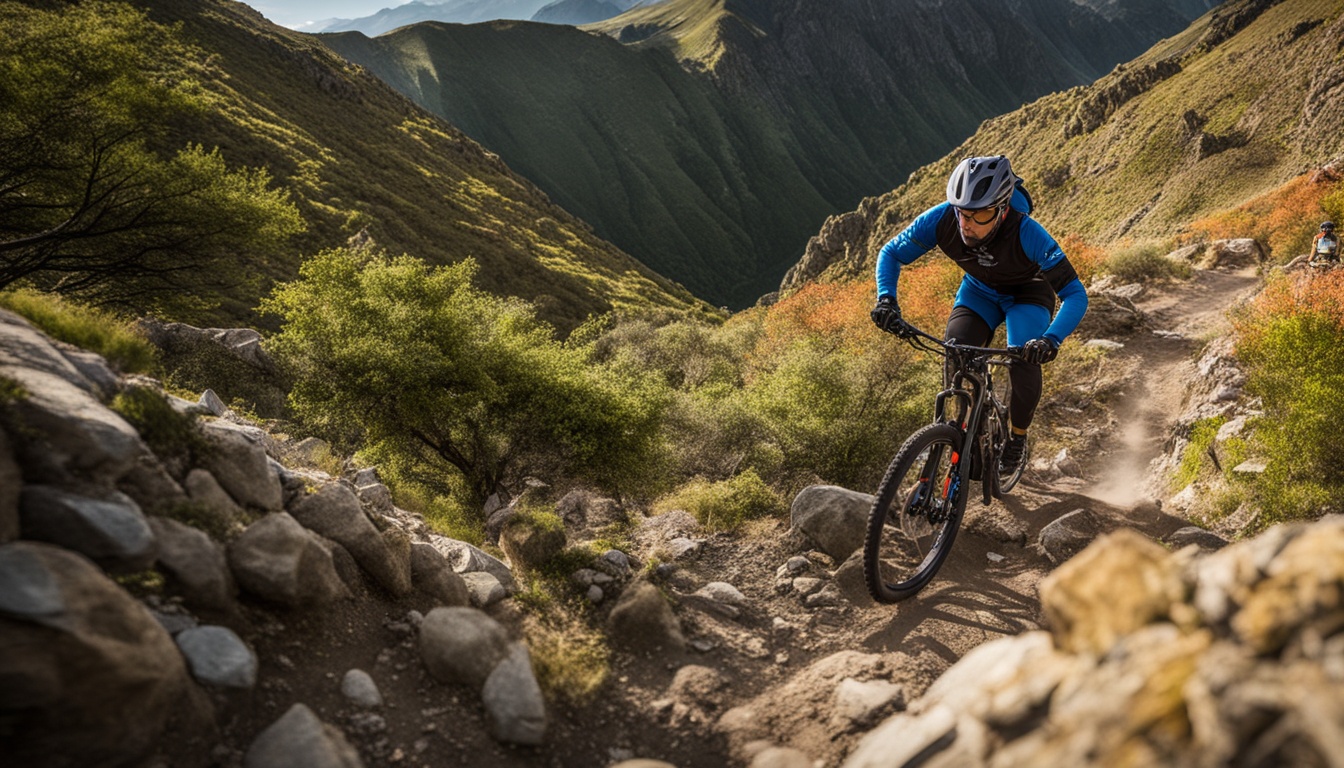

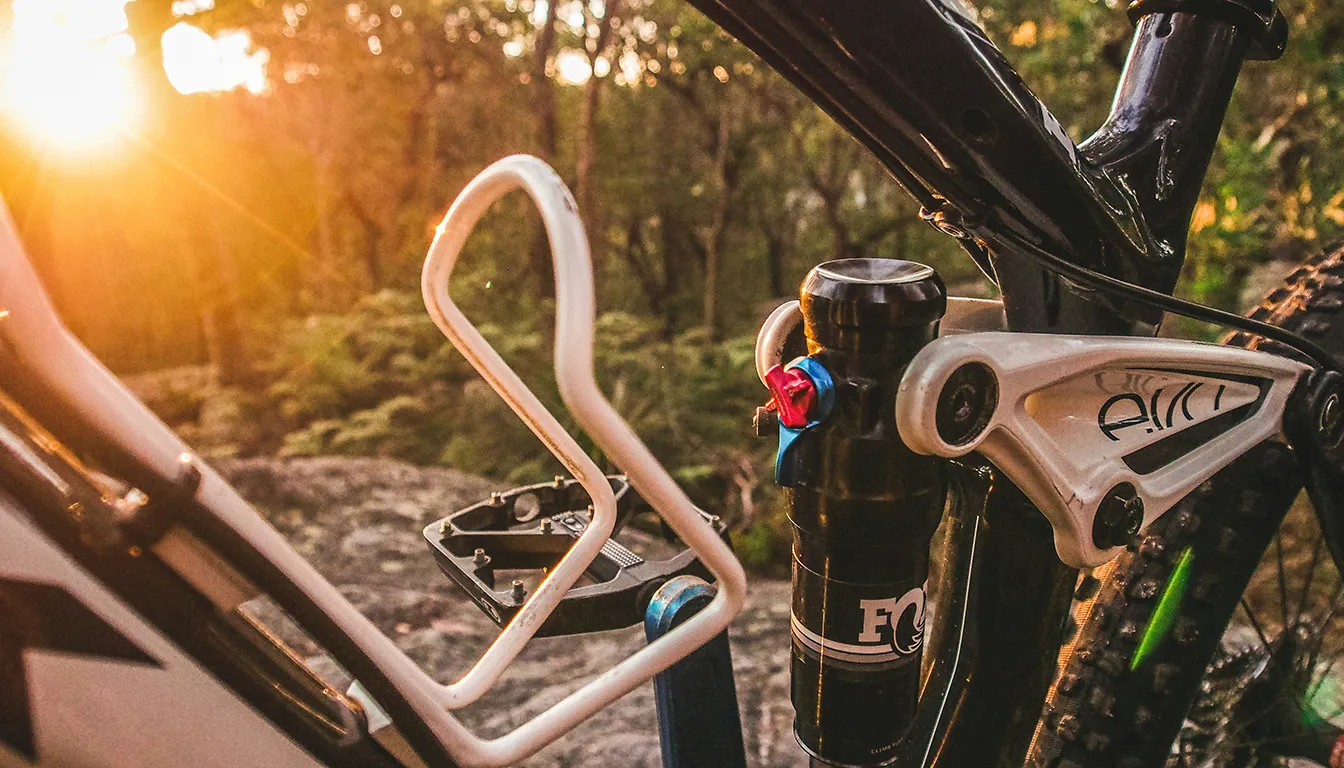
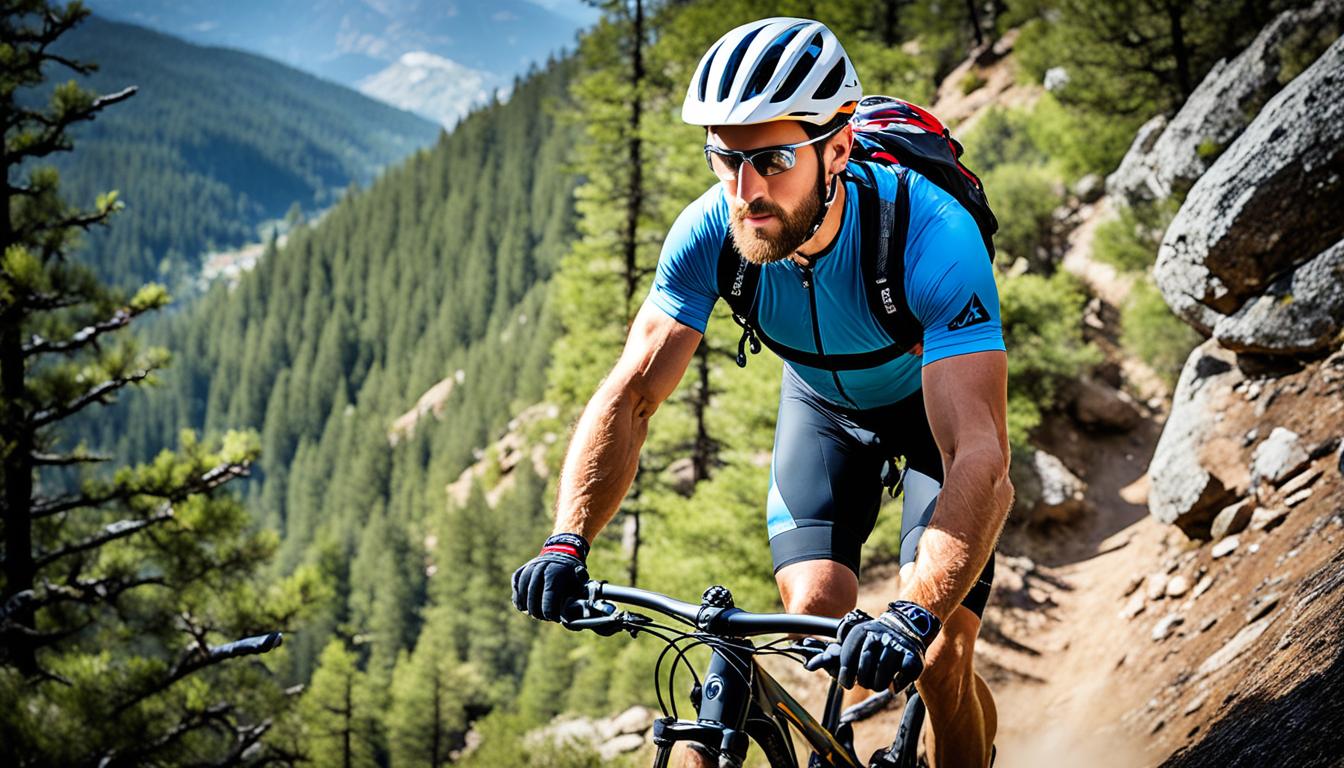
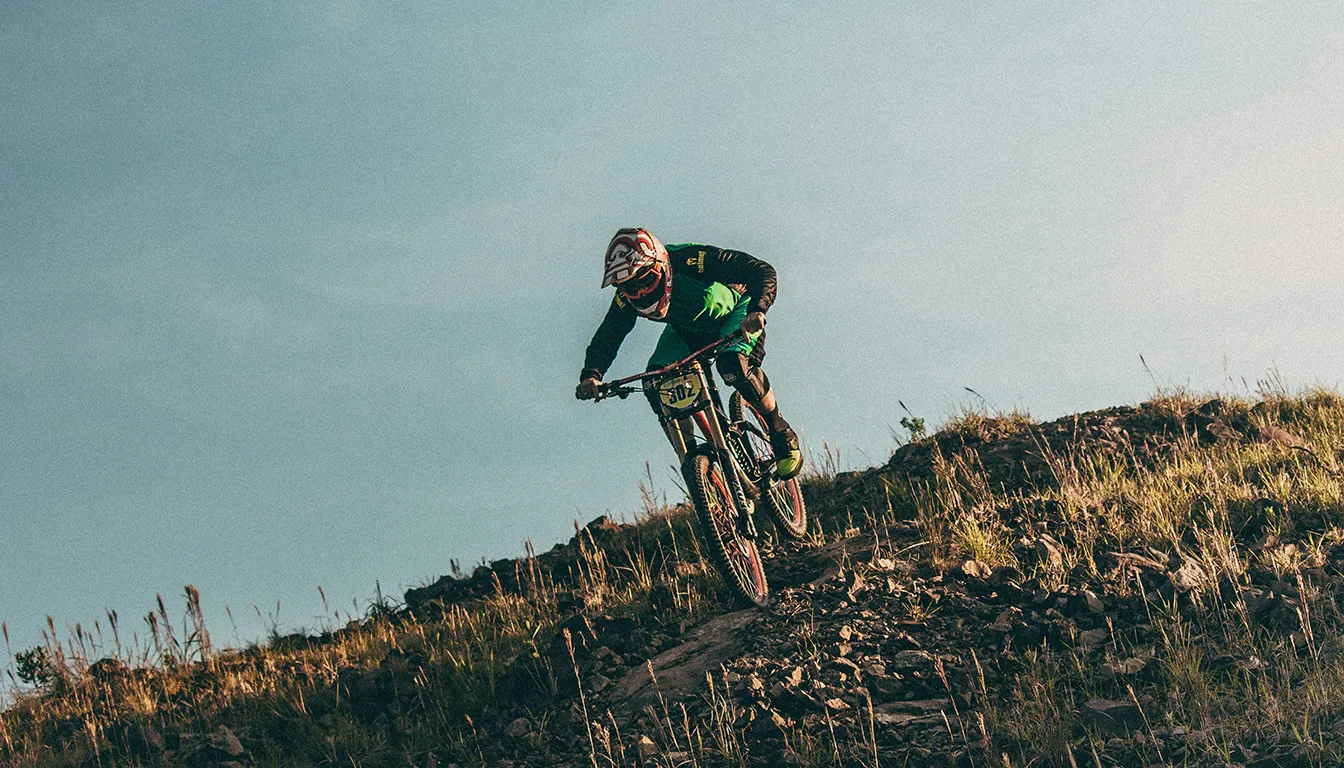
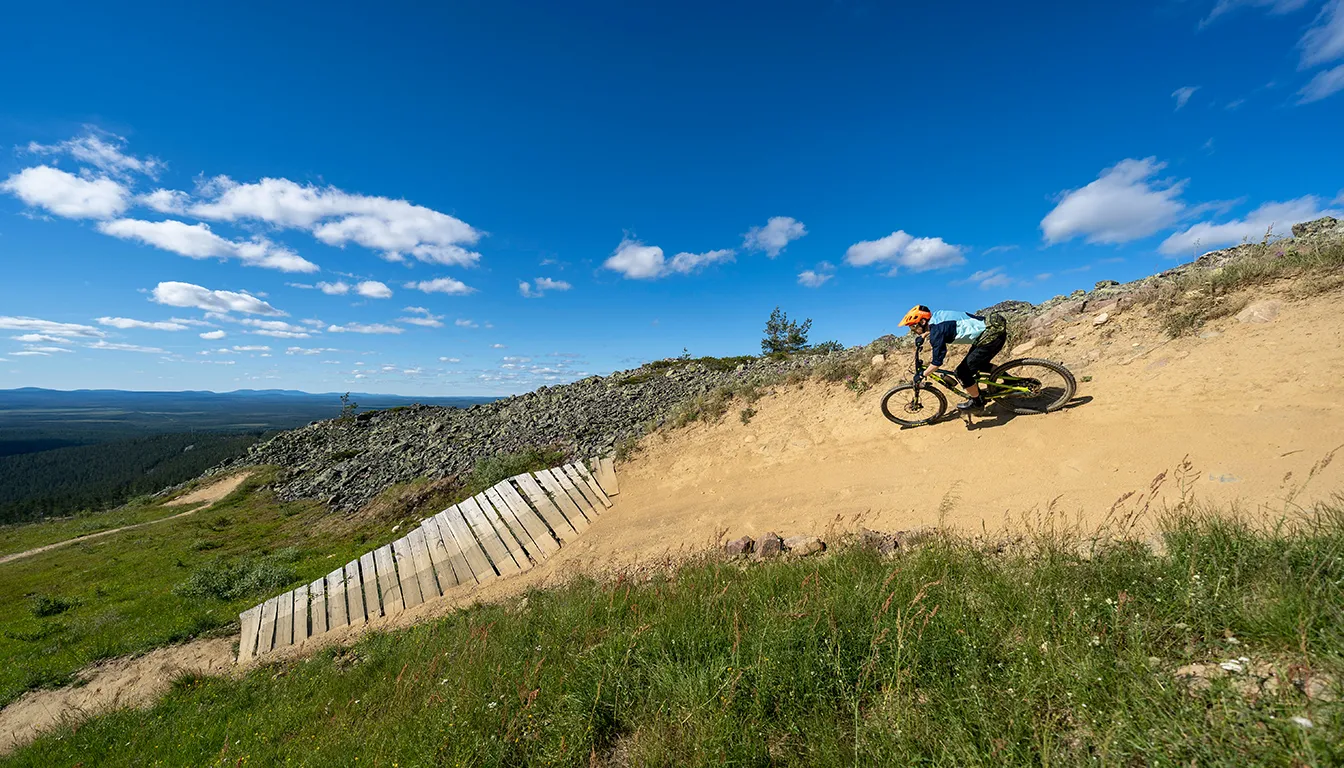
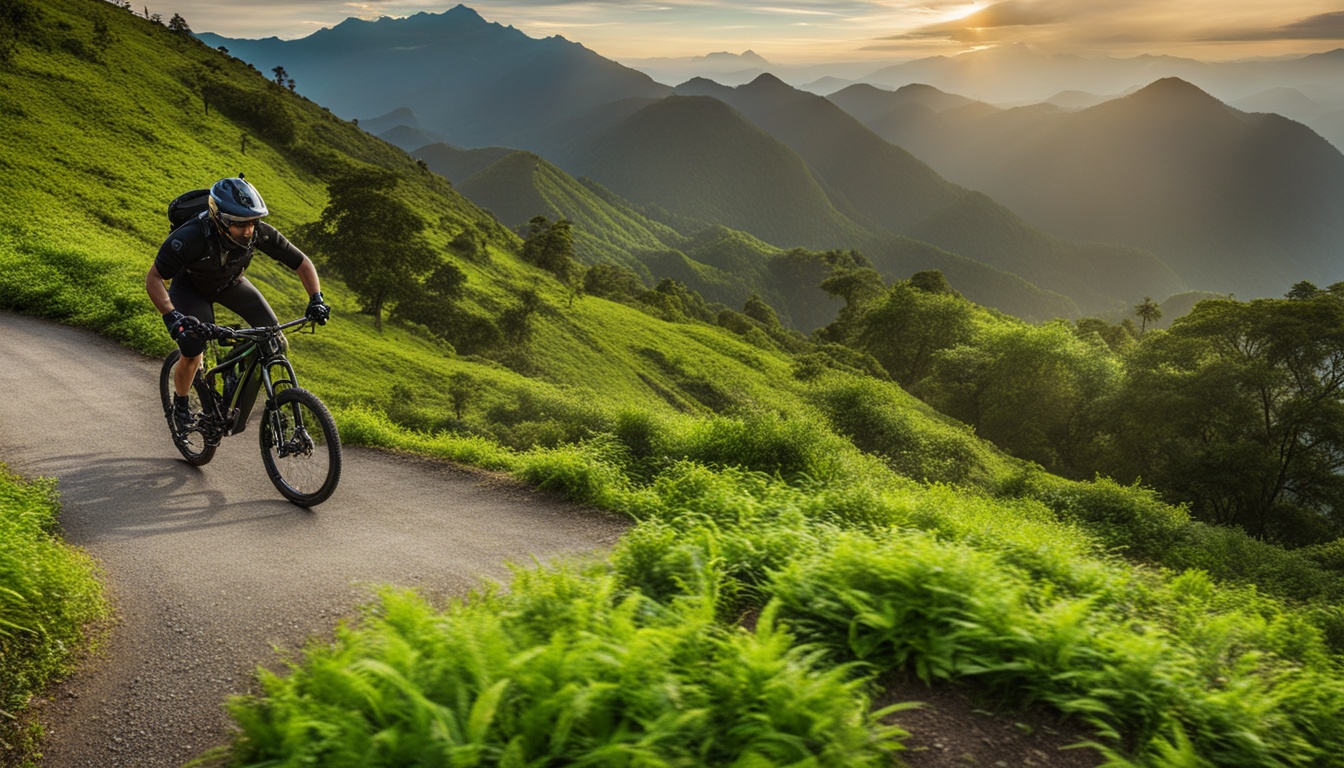

One thought on “What Are the Best Beginner Mountain Biking Tips for a Safe Start?”